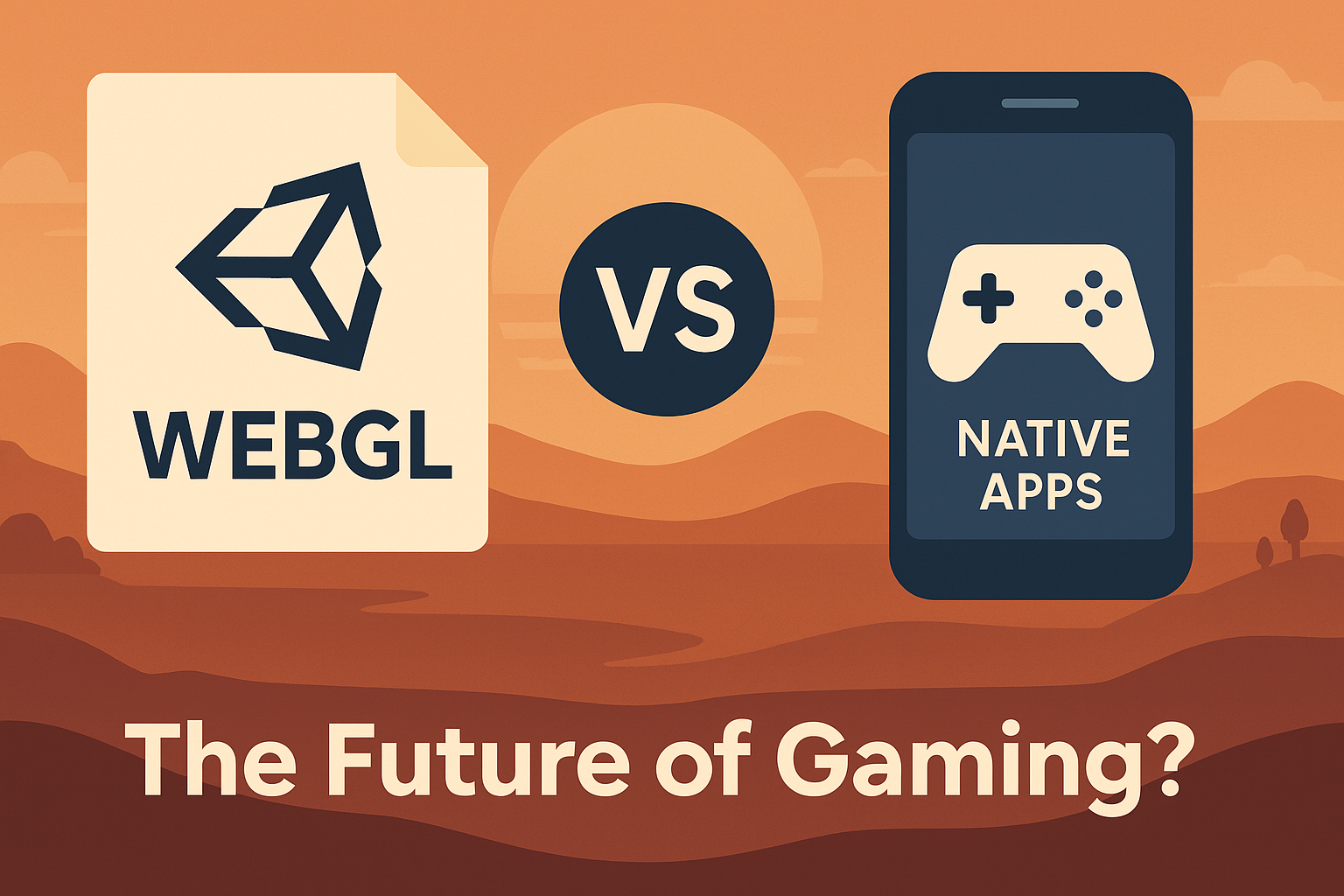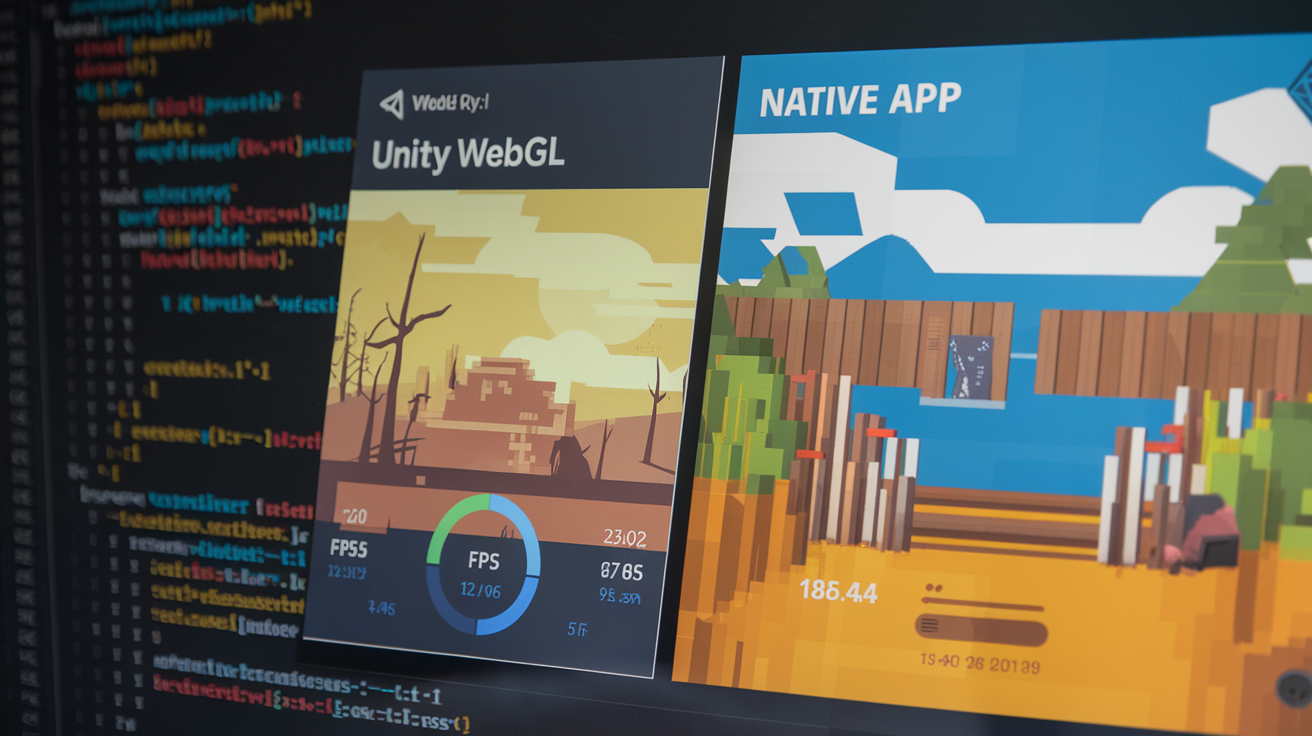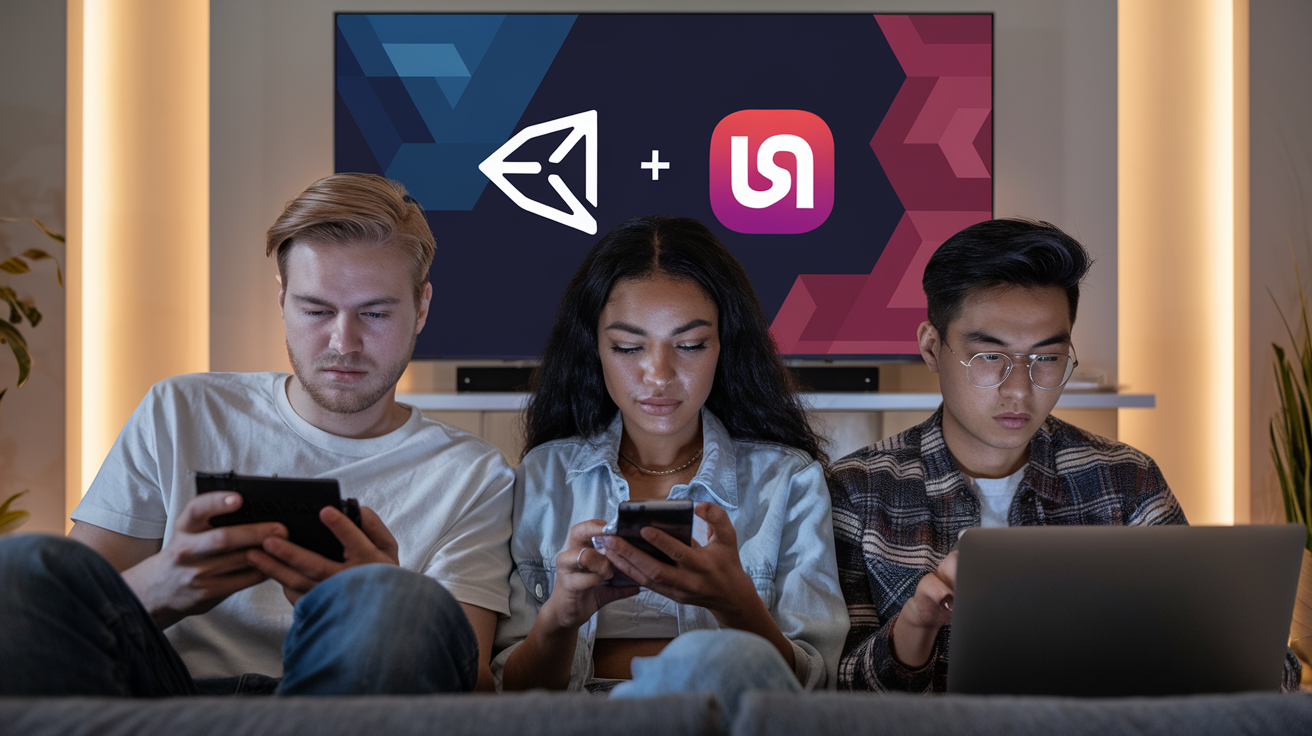Have you ever wondered about the future of gaming? 🎮 As technology advances at breakneck speed, the lines between browser-based and native app experiences are blurring. Enter Unity WebGL and Native Apps - two contenders vying for supremacy in the gaming world.
You've probably encountered both types of games, but do you really know the difference? Unity WebGL brings the power of 3D gaming to your browser, while Native Apps offer a tailored experience on your device. But which one holds the key to gaming's future? 🔑 The answer might surprise you, and it's not as straightforward as you might think.
In this blog post, we'll dive deep into the world of Unity WebGL and Native Apps, exploring their strengths, weaknesses, and potential to shape the gaming landscape. We'll compare their performance, examine development considerations, and analyze user experience. By the end, you'll have a clearer picture of where gaming is headed and how these technologies are driving that change. So, are you ready to peek into the crystal ball of gaming's future? Let's begin our journey!

Unity WebGL is a powerful technology that allows developers to create and publish interactive 3D and 2D content directly to web browsers. It's an implementation of Unity's game engine that compiles your game to JavaScript, making it accessible through HTML5-compatible browsers without the need for additional plugins. This means you can play Unity-powered games directly in your browser, offering a seamless gaming experience across different devices and platforms.
Native apps, on the other hand, are applications specifically designed and developed for a particular operating system or device. When it comes to gaming, native apps are created to run directly on platforms like iOS, Android, or desktop operating systems. These apps are built using platform-specific programming languages and tools, allowing them to fully leverage the device's hardware capabilities and offer optimized performance.
The main distinction between Unity WebGL and native apps lies in their deployment and accessibility. WebGL games run in browsers, making them instantly playable without downloads or installations. Native apps, however, require installation from app stores and occupy space on your device. WebGL offers broader reach and easier updates, while native apps provide better performance and access to device-specific features.
Unity WebGL shines in its accessibility and cross-platform compatibility. You can easily share WebGL games via links, reaching a wider audience instantly. However, it may face performance limitations in complex games and lacks access to certain device features. Native apps excel in performance and can fully utilize device capabilities, offering a more immersive gaming experience. Yet, they require separate development for each platform and face app store approval processes.
You can't ignore the explosive growth of mobile gaming in recent years. With smartphones becoming more powerful and ubiquitous, mobile games have captured a massive audience. From casual puzzle games to complex multiplayer experiences, you'll find a game for every taste on your mobile device. This shift has forced developers to prioritize mobile platforms, often leading with mobile-first strategies.
As you explore the gaming landscape, you'll notice a significant uptick in browser-based games. Thanks to technologies like WebGL, you can now enjoy rich, immersive gaming experiences directly in your web browser. This trend is reshaping how you access and play games, eliminating the need for downloads or installations. Browser games offer you instant gratification and the ability to play across different devices seamlessly.
In today's gaming world, you expect to play your favorite games on multiple devices. This demand has fueled the rise of cross-platform development. Game engines like Unity have made it easier for developers to create games that run smoothly on various platforms. As a gamer, you benefit from this trend with consistent experiences across your smartphone, tablet, and computer.
Your expectations as a gamer have evolved. You now demand high-quality graphics, smooth performance, and seamless multiplayer experiences, regardless of the platform. The line between mobile, browser, and native apps is blurring, and you're looking for games that offer the best of all worlds. Accessibility, quick loading times, and social features have become crucial factors in your gaming choices.

When comparing Unity WebGL and native apps, graphics capabilities are a crucial factor. Unity WebGL leverages WebGL technology, allowing for impressive 3D graphics directly in the browser. However, native apps often have the edge in terms of graphical fidelity and performance. You'll find that native apps can tap into device-specific hardware acceleration, resulting in smoother frame rates and more complex visual effects.
Loading times can significantly impact your gaming experience. Native apps generally offer faster initial load times as they're installed directly on your device. In contrast, Unity WebGL games need to be downloaded and compiled in real-time, which can lead to longer initial load times. However, once loaded, WebGL games can offer seamless gameplay without additional downloads. You'll find that both platforms have room for optimization, but native apps often have more tools at their disposal for fine-tuning performance.
One of the strengths of Unity WebGL is its broad device compatibility. You can access WebGL games on any device with a compatible browser, from smartphones to desktop computers. Native apps, while offering excellent performance, are limited to specific platforms and operating systems. This means you might need different versions of the same game for iOS, Android, and desktop platforms.
Network requirements are another crucial aspect to consider. Unity WebGL games require a stable internet connection to function, as they rely on continuous data transfer between the browser and the server. Native apps, once downloaded, can often function offline or with minimal network usage. However, many modern games, regardless of platform, require online connectivity for multiplayer features, updates, and additional content downloads.
Now that we've examined the performance aspects, let's explore the development considerations for both Unity WebGL and native apps.
When you're developing games, you need to consider the long-term maintenance of your project. Unity WebGL offers a significant advantage in this area. With WebGL, you can push updates instantly to all users without requiring them to download and install new versions. This streamlines the update process and ensures all players are always on the latest version of your game.
Unity WebGL can potentially reduce your development costs and time. You can create a single codebase that runs across multiple platforms, eliminating the need for separate native app versions. This cross-platform capability allows you to reach a wider audience without additional development efforts. However, native apps might still be preferable if you're targeting specific platform features or aiming for maximum performance.
While Unity WebGL offers excellent cross-platform compatibility, it may limit your access to platform-specific features. Native apps, on the other hand, allow you to fully leverage device-specific capabilities like haptic feedback, AR/VR integration, or advanced push notifications. Consider your game's requirements carefully when choosing between WebGL and native development.
Your choice between Unity WebGL and native apps can significantly impact your monetization strategy. Native apps typically have more robust in-app purchase systems and can leverage app store ecosystems. However, WebGL games can implement alternative monetization methods like ads or subscription models without being subject to app store fees. Consider your target audience and revenue goals when deciding on the best approach for your game.
Now that you understand the development considerations, let's explore how these factors influence the user experience and accessibility of Unity WebGL and native apps.

You'll find that Unity WebGL games offer a significant advantage when it comes to instant play. Unlike native apps that require downloading and installation, WebGL games can be accessed immediately through a web browser. This instant accessibility can greatly enhance your gaming experience, allowing you to jump into the action without any delays or storage concerns.
With Unity WebGL, you can enjoy a consistent gaming experience across various devices. Whether you're playing on your desktop, tablet, or smartphone, the game's interface and functionality remain uniform. This cross-device consistency ensures that you can pick up where you left off, regardless of the device you're using, providing a seamless gaming experience.
While native apps generally offer robust offline capabilities, WebGL games have made significant strides in this area. You can now enjoy many WebGL games offline after the initial load, thanks to advanced caching technologies. However, it's worth noting that native apps still have an edge when it comes to extensive offline gameplay and data storage.
Unity WebGL games excel in social sharing and virality. You can easily share game links with friends or on social media platforms, allowing for quick and widespread distribution. This shareability factor can significantly boost a game's popularity and user base. Native apps, while shareable, often require additional steps for installation, which can impact their viral potential.
Now that we've explored the user experience and accessibility aspects, let's delve into the future trends and predictions for Unity WebGL and native apps in gaming.
As web technologies continue to evolve, you'll see significant improvements in WebGL performance and capabilities. New APIs and optimizations will enable more complex and visually stunning games to run smoothly in browsers. You can expect Unity WebGL to leverage these advancements, narrowing the gap between web-based and native gaming experiences.
The rapid progression of mobile hardware will greatly impact both Unity WebGL and native apps. As smartphones and tablets become more powerful, you'll find that WebGL games can harness this increased processing power, delivering near-native performance. This evolution will make web-based gaming an increasingly viable option for developers and players alike.
Cloud gaming is set to revolutionize the industry, and you'll see its integration with both Unity WebGL and native apps. This technology will allow you to play high-end games on any device, regardless of its hardware limitations. Unity WebGL might gain an advantage here, as it can seamlessly integrate with cloud services, potentially offering a more streamlined gaming experience.
You'll likely witness the emergence of hybrid solutions that combine the strengths of both Unity WebGL and native apps. These approaches could offer the best of both worlds: the accessibility and instant playability of WebGL games, coupled with the performance benefits of native apps. As a developer or gamer, you'll benefit from this fusion, enjoying more flexible and powerful gaming experiences across various platforms.
As you've explored the world of Unity WebGL and native apps, you've gained valuable insights into their roles in shaping the future of gaming. Both platforms offer unique advantages, with WebGL providing accessibility and cross-platform compatibility, while native apps excel in performance and device-specific optimizations.

The gaming landscape continues to evolve rapidly, and your choice between Unity WebGL and native apps will depend on your specific project requirements, target audience, and development resources. Whichever path you choose, staying informed about emerging trends and technologies will be crucial to creating successful and engaging gaming experiences. As you move forward, consider experimenting with both platforms to fully understand their potential and limitations, allowing you to make informed decisions that best serve your gaming vision and your players.
Did you like this post? Tell us
Leave a comment
Log in with your itch.io account to leave a comment.